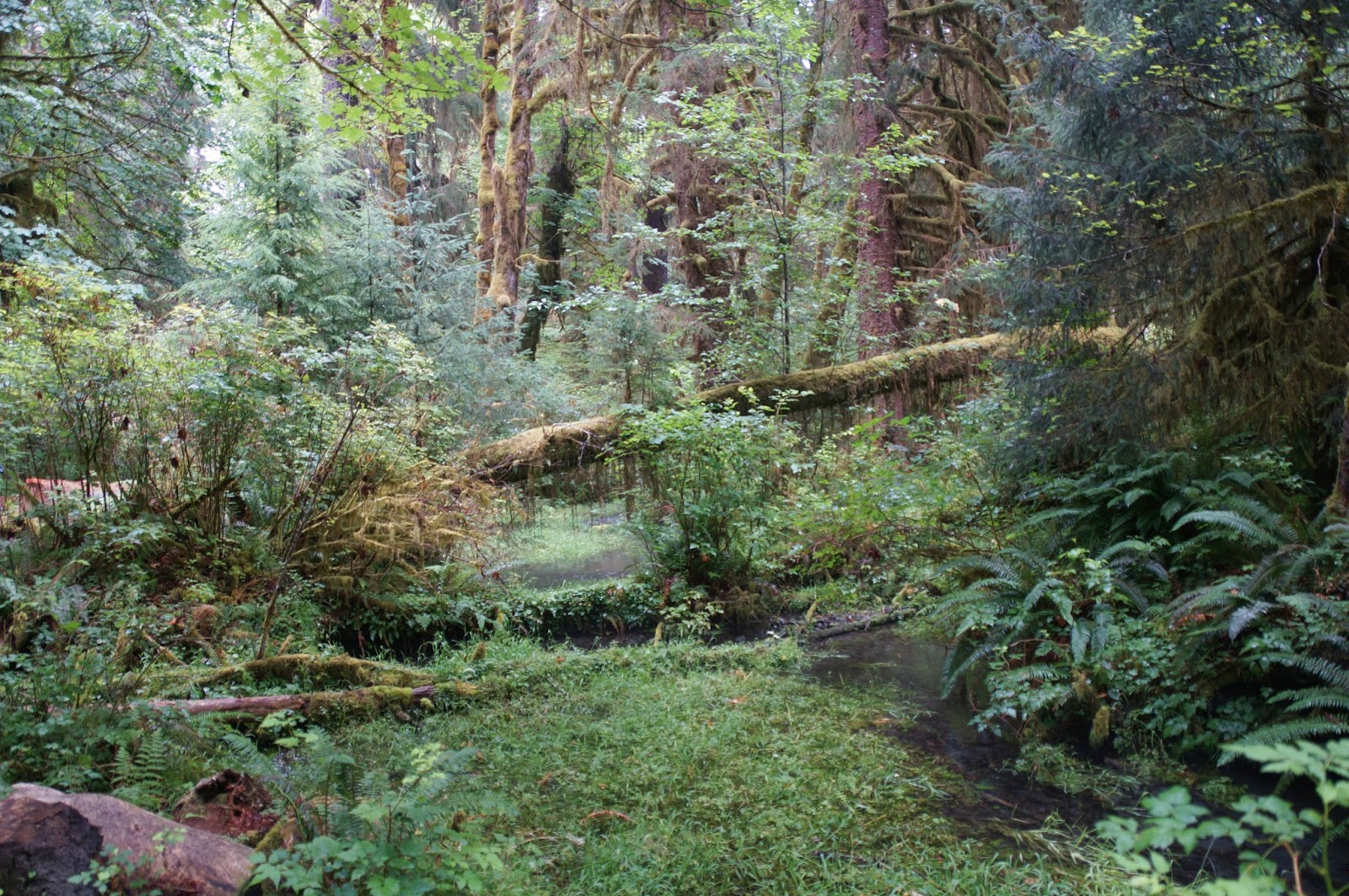TUESDAY,
AUGUST 12:
Drizzling rain this morning. But
after taking time for a substantial breakfast of cinnamon rolls, bacon, hash
browns, and melon, we still decided to stick with our plan to drive into the
Hoh Rain Forest. This is about 1 ½ hours
southwest of us, still within the National Park.
We
arrived in the early afternoon, and the rain had mostly stopped, but still kind
of misty. Appropriate for a day in the Rain Forest. We saw that there would be a Ranger-led walk
at 2:00, so we kind of hung out, looking at some exhibits in the Visitors
Center til then. Our Ranger led us on a
1-mile hike on the Spruce Nature Trail.
There were about 2 dozen of us who joined her on this easy hike in the
heart of the Hoh Rain Forest. It’s a
temperate rain forest (as opposed to a tropical rain forest), related to the
huge Tongass Rain Forest we saw for so long up in Alaska. In fact, this rain forest once contiguously spanned
the entire Pacific Coast from Southeast Alaska to the Calif Central Coast. Trapped between the ocean and the mountains,
it captures all of that coastal moisture in the form of rain, around 146 inches
a year!
All of this
moisture creates an incredibly dense green canopy of both deciduous and conifer
trees, along with just as dense an understory layer close to the ground. The two predominant conifers here are Sitka
Spruce and Hemlock. Not
much Red Cedar nor Douglas Fir, as we learned on our hike; the Douglas Fir requires disturbance (e.g., fire) to
grow, and there has never been a
fire here. Hence, an almost primordial
old growth forest.
Good example of a "colonnade" - mature trees straight in a row. This phenomenon is the last phase in a cycle which begins with a fallen trunk. As the trunk decays, there is so much water & nutrients here that seedlings spring up on the trunk itself. Over the years, the trunk decays completely, and a few of the seedlings survive to maturity, standing like soldiers in a row:
Our Ranger concluded our walk at the Hoh River, a glacier-fed river originating high in the Olympic Mountains.
Bill & I continued the rest of this trail on our
own.
After a
little rest at the Visitors Center, we set out in the late afternoon on our own
on the 2nd main trail in this area – the Hall of Mosses. So-named for obvious reasons.
Amazing to see how huge mosses alter a tree’s
looks. There are lots of Broad-leaf
Maples here, almost all covered with moss.
So unique.
So now we’ve experienced two of Olympic National Park’s 3 ecosystems: the Pacific Coast, and the Temperate Rain Forest. The third is the Sub-alpine forest, which would be the mountains. When it’s drier and sunnier, we plan to drive over to Hurricane Ridge for a hike, which would be the third ecosystem. Our Ranger said that of all the 52 National Parks, Olympic is the one she’d choose to be in, because of the 3 hugely divergent ecosystems. She can walk in a sub-alpine forest in the day, and encamp on the coast at night, and be in a rain forest the next morning. In what other National Park can you do that, she asked.
Got back around 7:30. Fixed simple tacos for dinner.
















No comments:
Post a Comment